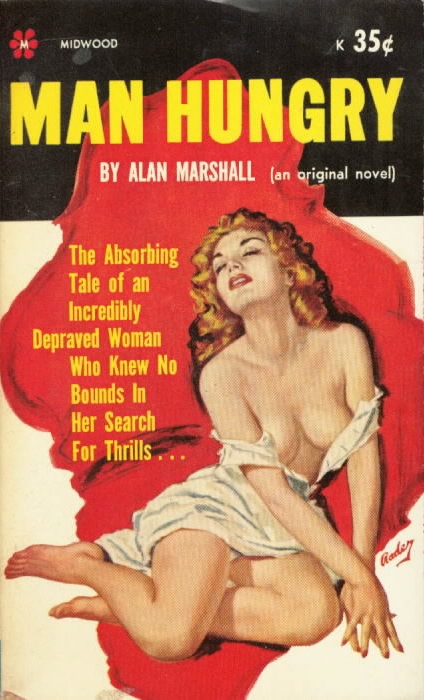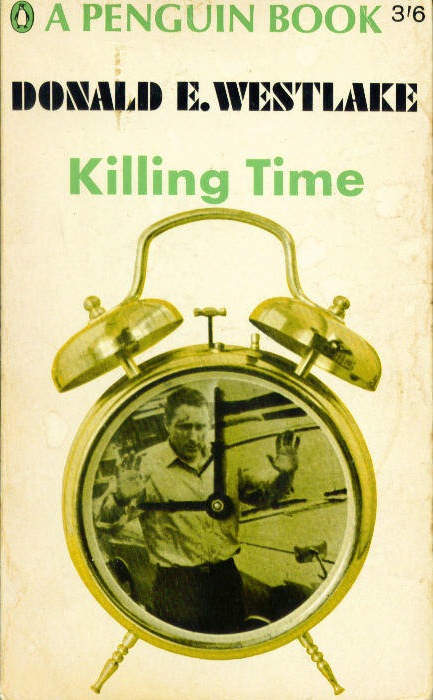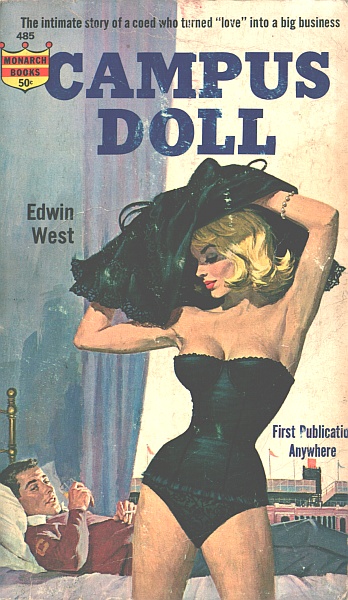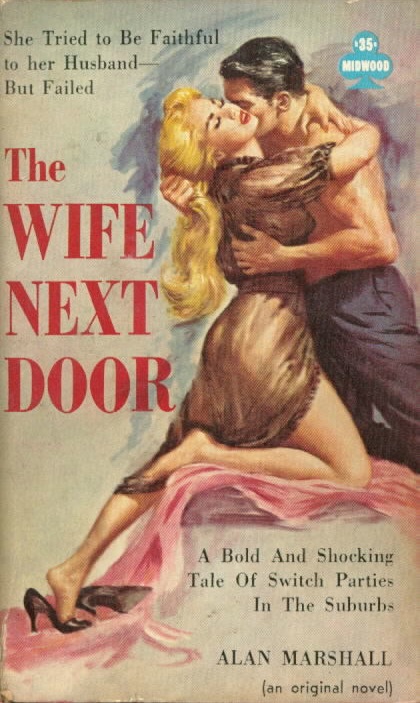| Vintage Pulp | Nov 6 2022 |

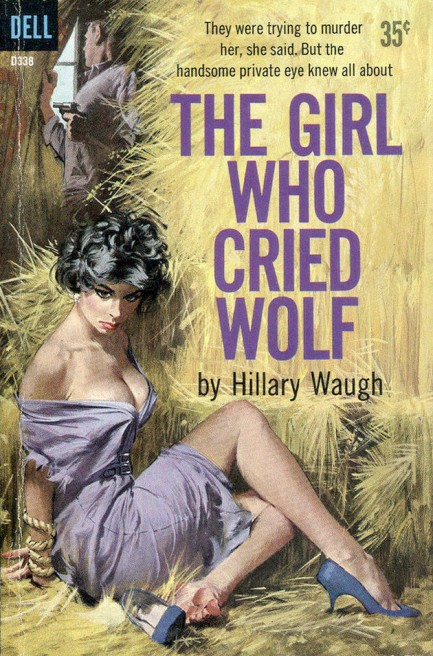
Hillary Waugh wrote more than forty novels and eventually earned a Grand Master designation from the Mystery Writers of America. His 1958 thriller The Girl Who Cried Wolf shows why, as he takes a standard detective novel premise and adds a touch of girl-crush cuteness to it. A rich co-ed named Patty Merchant has fallen hard for gumshoe Phil Macadam. She's never met him. He gave a lecture to her class and she went starry eyed over him. She hatches a phony stalking story in order to hire him and be close to him, which works fine until she's grabbed by actual kidnappers.
The Robert McGinnis cover art on this 1960 Dell edition—and the alternate version below—vibes femme fatale, but Patty Merchant is no man eater. She's shy, sweet, smart in school but a bit clueless in romance. You can't help but like her, and neither can Macadam. Which is good because he goes through the entire wringer and then some trying to locate and rescue her. The Girl Who Cried Wolf is a good, fast paced read, more soft-boiled than hard, but very entertaining. This being our first Waugh, we're already planning to pick up more of his work.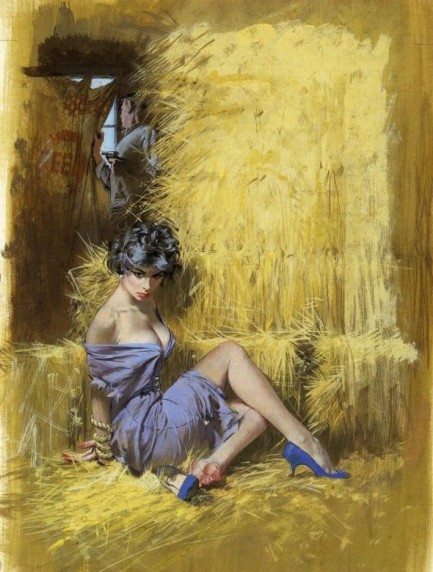
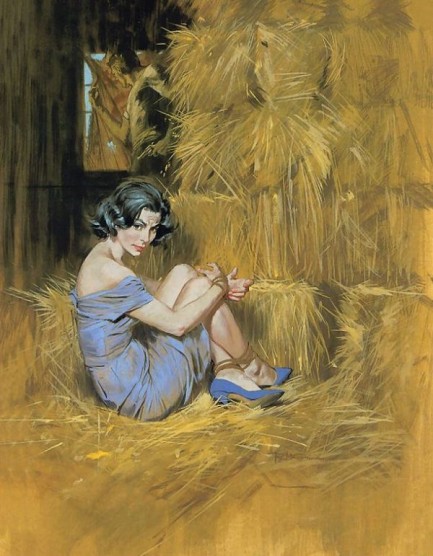
| Femmes Fatales | Nov 16 2020 |

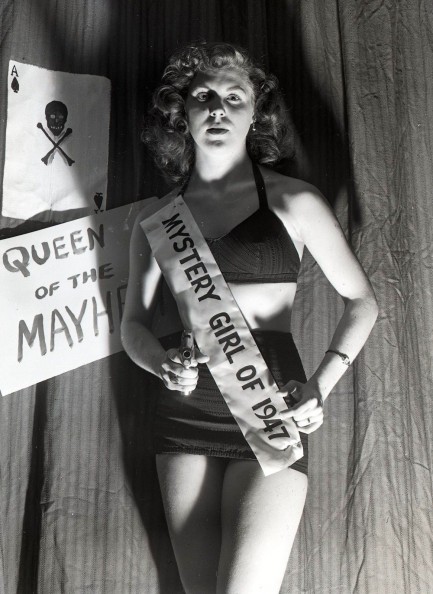
| Vintage Pulp | Jan 12 2019 |

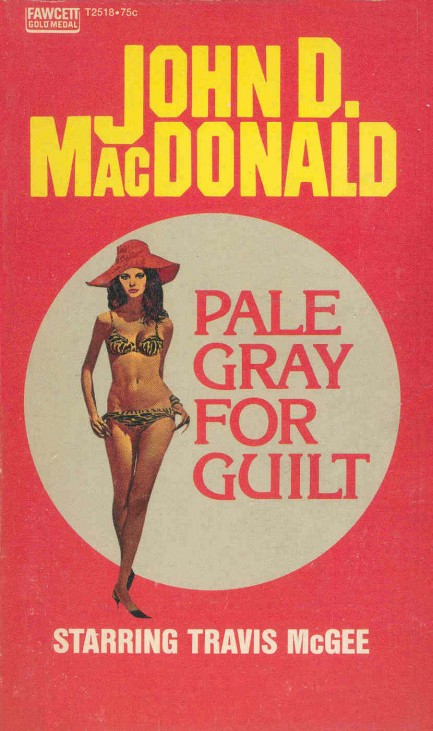
We finally used the internet for something useful and solved this MacDonald problem—we simply looked up some lists of his best books. Based on the consensus that emerged from his fans (who by the way seem to agree that the McGee series is not as good as his earlier standalone novels), we're going to read Dead Low Tide, The Executioners (made into the film Cape Fear), and The Drowner. Those seem to be the books people really like, and as a bonus they're all cheap to buy.
| Vintage Pulp | May 9 2011 |

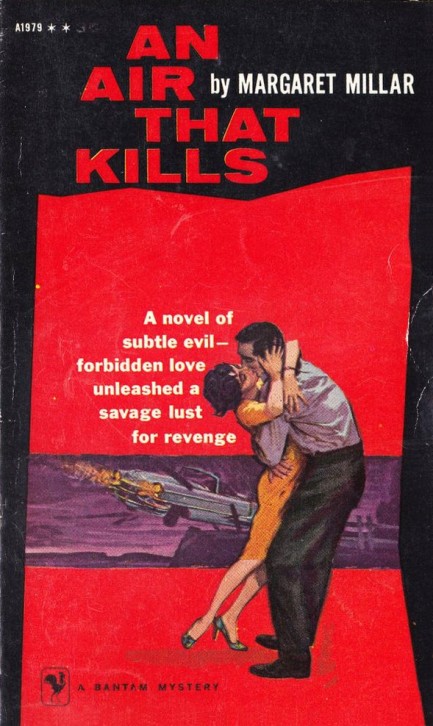
Margaret Millar was a respected writer who won the Mystery Writers of America's Grand Master Award in 1983, and happened to be the wife of acclaimed pulp author Ross MacDonald, aka Kenneth Millar. The air she has in mind here isn’t a physical thing, but rather the emotions of guilt and suspicion. Still though, it’s kind of a funny title, because when you consider how married couples get after a few decades together, it’s easy to imagine old Ross’s reaction every time Margaret let one slip. He probably smirked and said, “Jesus, there really is an air that kills.”
Anyway, the book is a mystery in which a married couple’s seemingly stable existence is rocked when the wife reveals that she’s pregnant with another man’s baby. That man soon turns up dead, drowned in his car at the bottom of a lake. However, this isn’t a straightforward puzzler. There are elements of melodrama, and the plot is stretched out over an extended period as we see the couple split and begin to live separate lives. But of course the mystery underpins everything, eventually circling back to center upon the woman’s new child.
An Air that Kills is considered by some to be Millar’s best work, and indeed she's considered by many critics to be one of the better writers of her era. She established a career before her husband did, though that doesn't seem to be as widely known as it probably should. In terms of writerly skill, we aren’t really qualified to say whether she's better than her spouse, but we’re sure it made for some interesting discussions and slightly edgy ribbing at the MacDonald/Millar dinner table. We highly recommend this book.
| Vintage Pulp | Dec 11 2009 |

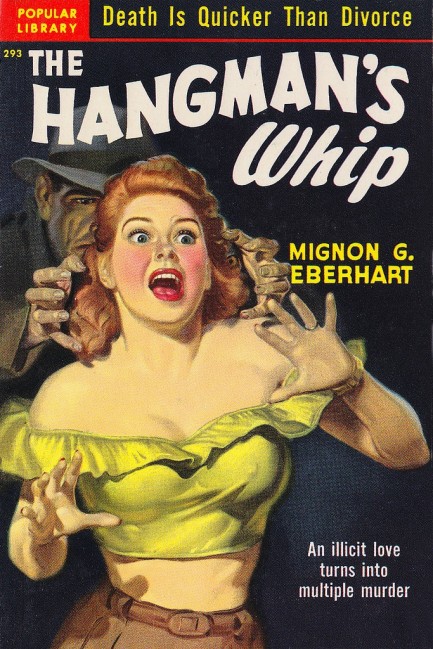
Mignonette Eberhart was an acclaimed mid-century crime writer who was the first to create a female sleuth, which she did in her book The Patient in Room 18. This was a year before Agatha Christie created her immortal sleuth Jane Marple in Murder at the Vicarage. Eberhart soon veered away from pure whodunits and into romance-mysteries that usually centered on good women involved with bad men. The tagline of 1940’s The Hangman’s Whip—“Death is quicker than divorce”—gets that idea across succinctly. It was in these writings that Eberhart flourished, becoming internationally known and highly paid. She authored fifty-nine books, six of which were adapted to film, along with three of her short stories, and in 1971 she earned the Mystery Writers of America Grand Master Award. Eberhart died in 1996, but she changed the romance genre and entertained millions while doing it. Her books—including The Hangman’s Whip—remain widely available.
| Modern Pulp | Jun 24 2009 |

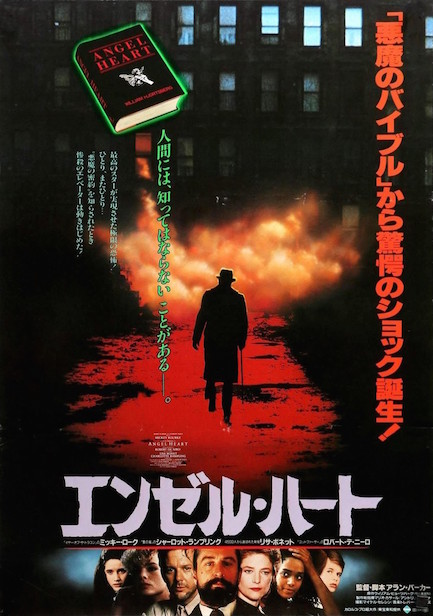
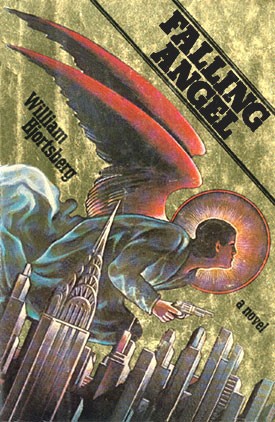 Above is the promo art for the June 24, 1987 Japanese premiere of Alan Parker’s supernatural thriller Angel Heart, a movie that happens to be one of our favorites around here. It’s based upon a novel by William Hjortsberg. That novel, a brilliant channeling of Hammett and Chandler titled Falling Angel, was nominated for an Edgar by the Mystery Writers of America. The film version is dark, violent, sexual, and unflinching. Most of the action was transplanted to New Orleans in place of the book’s New York setting, and that decision gave the film an ominous backdrop of jazz, rain, voodoo, bayou, and shadows, with a desperate protagonist wandering virtually lost in the center of it all.
Above is the promo art for the June 24, 1987 Japanese premiere of Alan Parker’s supernatural thriller Angel Heart, a movie that happens to be one of our favorites around here. It’s based upon a novel by William Hjortsberg. That novel, a brilliant channeling of Hammett and Chandler titled Falling Angel, was nominated for an Edgar by the Mystery Writers of America. The film version is dark, violent, sexual, and unflinching. Most of the action was transplanted to New Orleans in place of the book’s New York setting, and that decision gave the film an ominous backdrop of jazz, rain, voodoo, bayou, and shadows, with a desperate protagonist wandering virtually lost in the center of it all.
When the film opened in the U.S. reviewers were impressed with the visual tapestry Alan Parker had constructed, but quite a few were unhappy with both Lisa Bonet’s sexually charged role and the lack of sympathetic characters in the narrative. But this is another of those films that has staying power. Mickey Rourke is brilliant as the rumpled detective Harry Angel, Bonet manages a brave performance in a difficult role, and Robert DeNiro is oily and secretly amused as Louis Cyphre, the client who knows so much more than he’s telling. In fact, if not for an almost ruinous special effects misstep in the final minutes, we’d call this movie a perfect piece of pulp cinema. But even with that one colossal error, this kind of hellride doesn’t come along often, which is why we appreciate it as a rare gem, now twenty-two years old.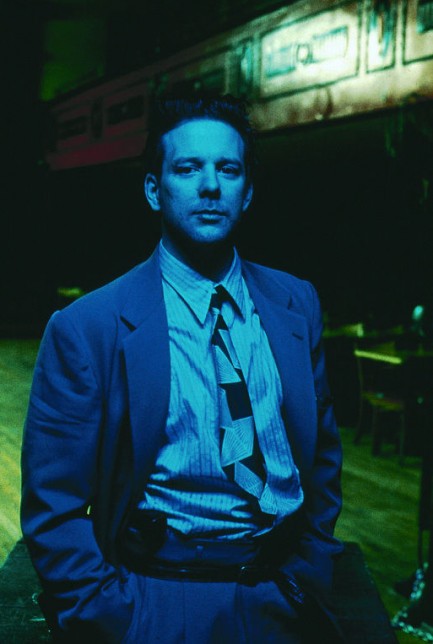

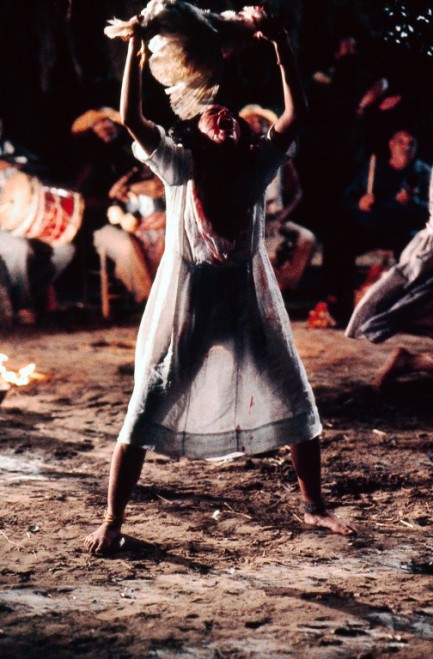
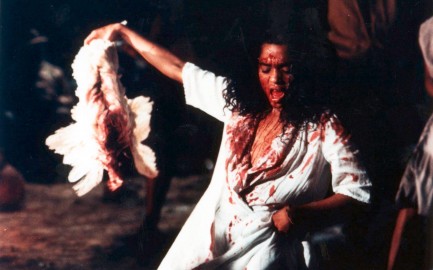
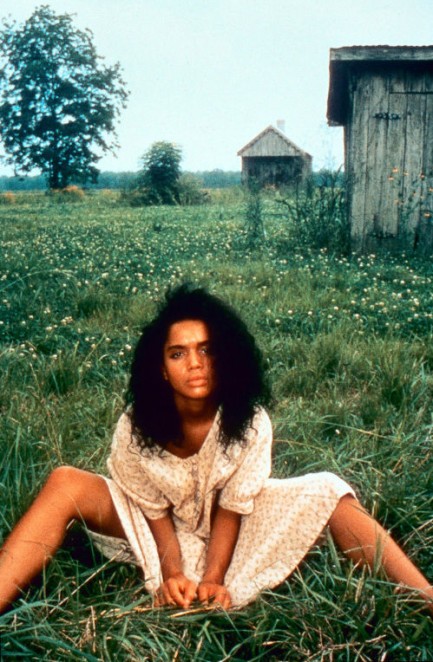
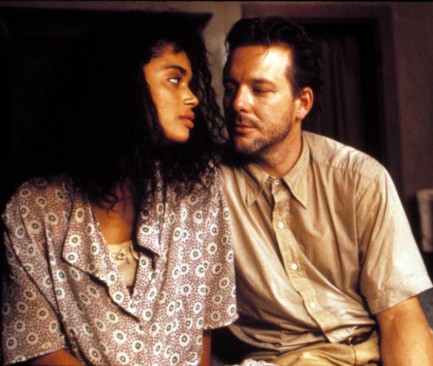
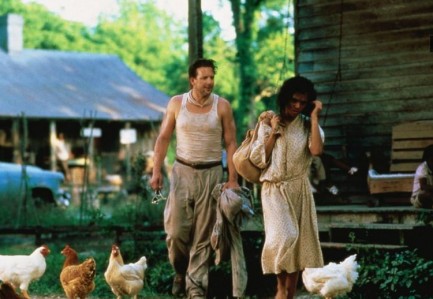


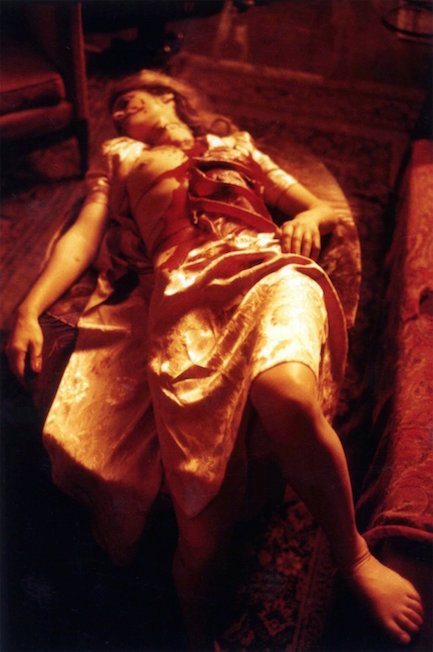
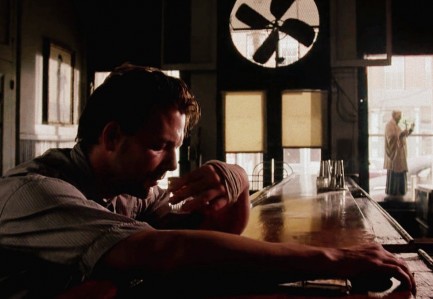
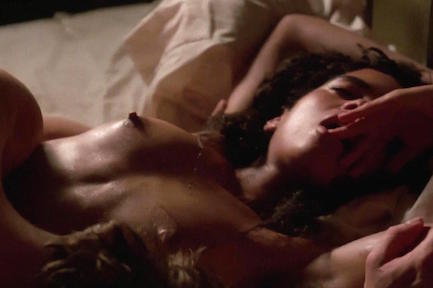
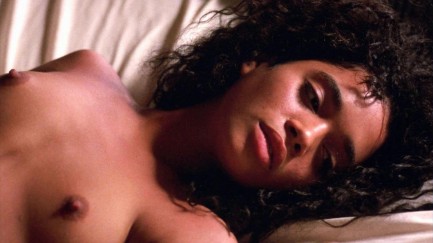
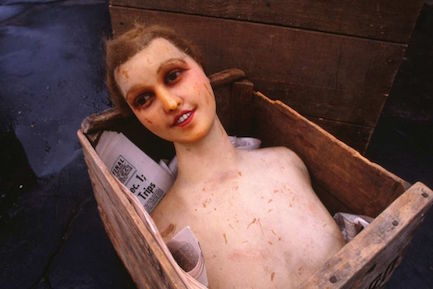
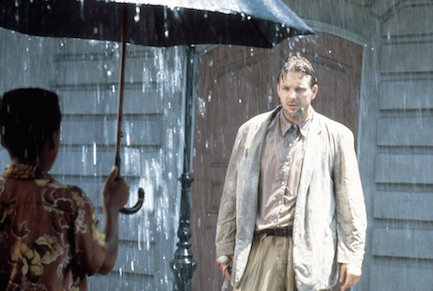



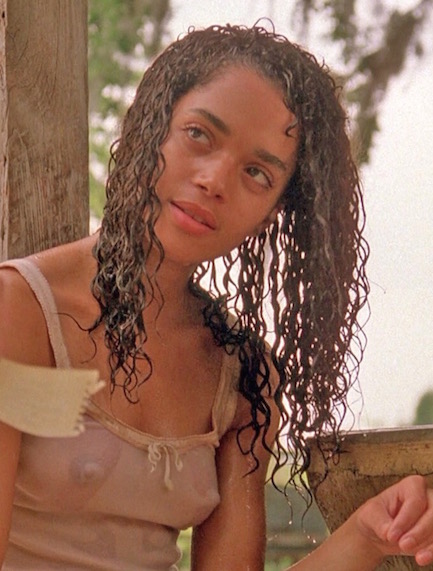
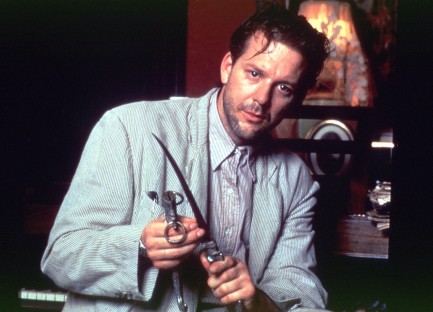
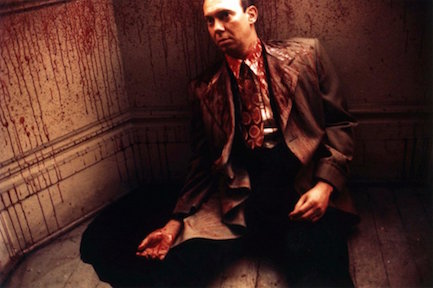
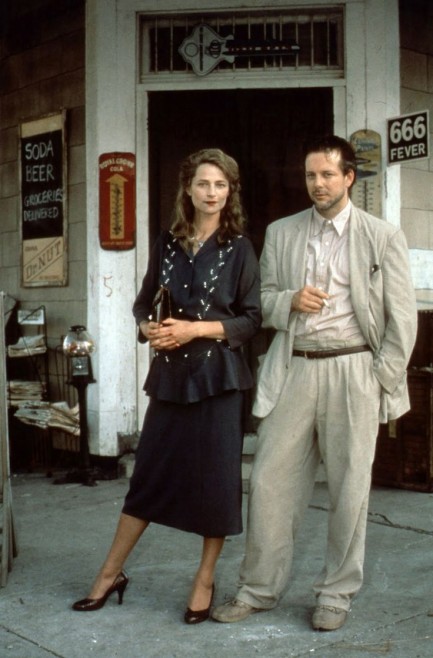
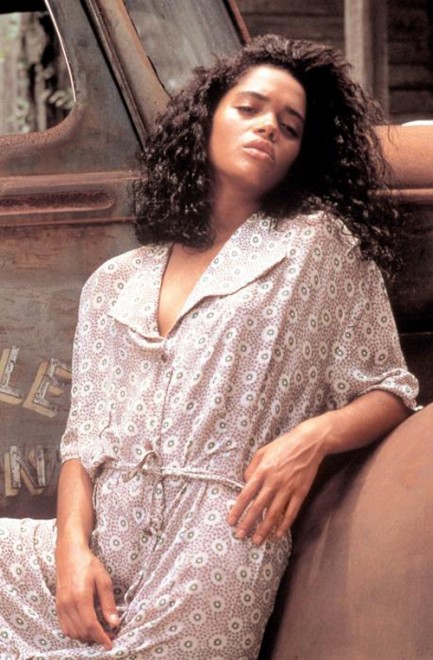
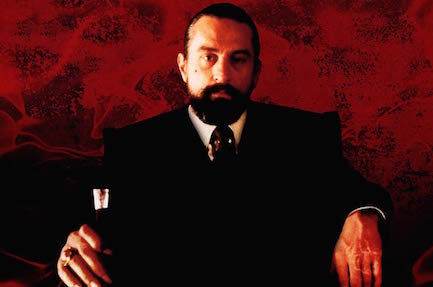

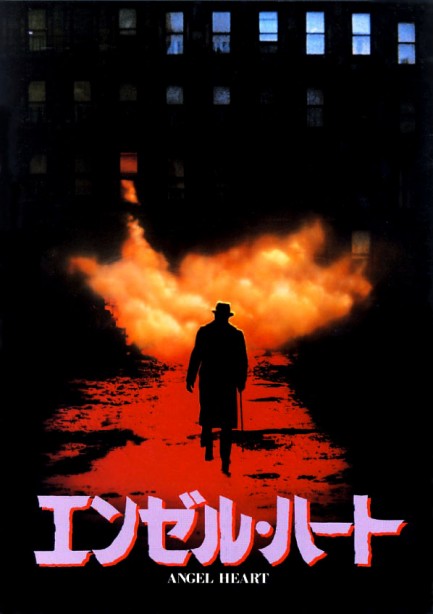
| Vintage Pulp | Jun 9 2009 |

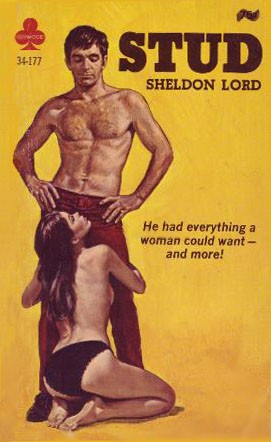 Today for your enjoyment we have another example of a heavyweight author earning extra nickels under the guise of a pseudonym. This time it’s crime thriller icon Lawrence Block, who’s won four Shamus Awards, three Edgars, seen his novels 8 Million Ways To Die, The Campus Tramp and Deadly Honeymoon made into films of varying quality, and who wrote the screenplay for the recent critically acclaimed film My Blueberry Nights.
Today for your enjoyment we have another example of a heavyweight author earning extra nickels under the guise of a pseudonym. This time it’s crime thriller icon Lawrence Block, who’s won four Shamus Awards, three Edgars, seen his novels 8 Million Ways To Die, The Campus Tramp and Deadly Honeymoon made into films of varying quality, and who wrote the screenplay for the recent critically acclaimed film My Blueberry Nights.
But it was as Sheldon Lord that he really let his hair down, penning salacious books like Stud, as well as the lesbian themed tales below. He also flaunted his utter immunity to writer’s block by publishing fiction under the names Jill Emerson, Chip Harrison, Paul Kavanaugh, and Andrew Shaw. It's an astonishing output. Maybe when Block wrote Stud he was thinking about himself.
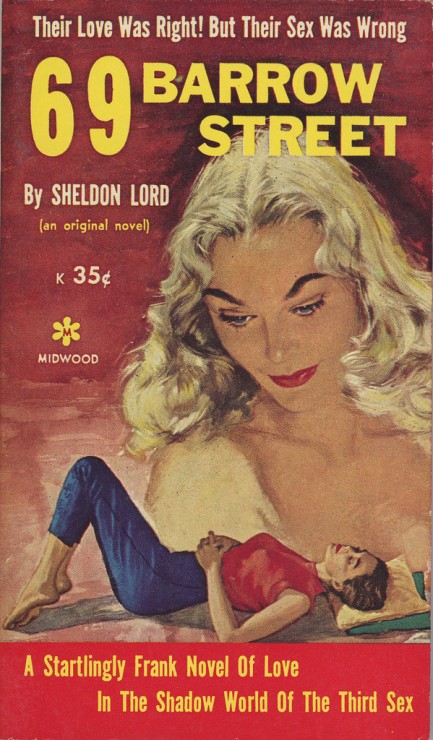
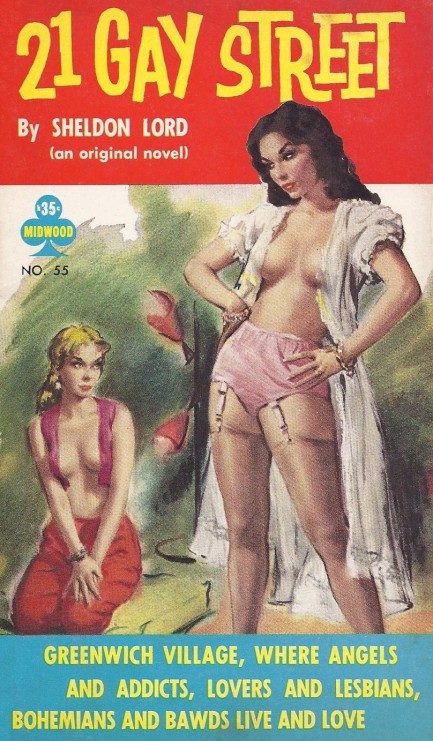
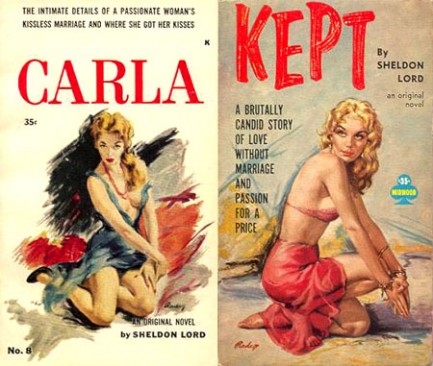
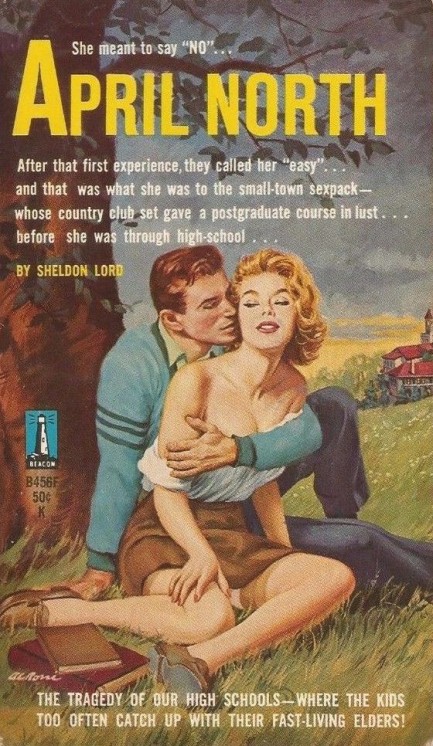
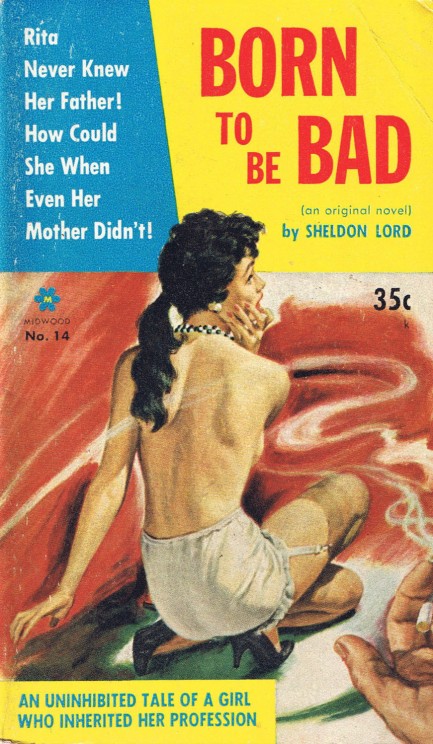
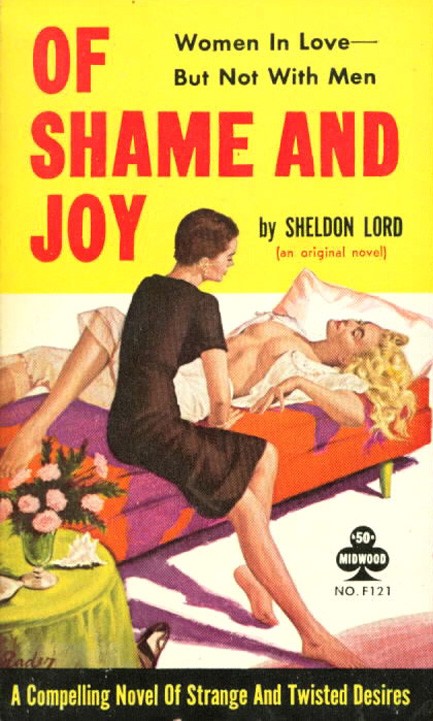
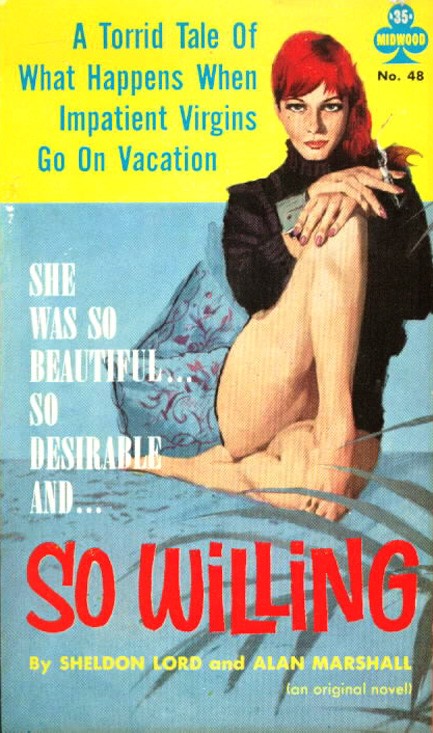
| Intl. Notebook | Jan 1 2009 |


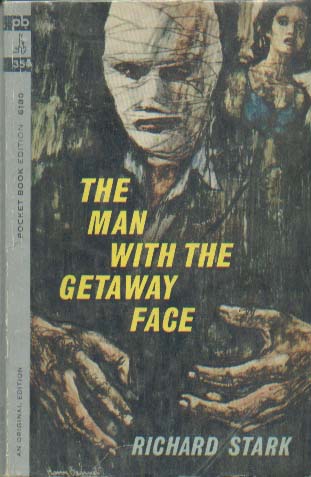 Novelist and screenwriter Donald E. Westlake died Friday of a heart attack at age 75. Westlake who began publishing in 1960, wrote more than 100 books under his name and several pseudonyms. He won three Edgar awards from the Mystery Writers of America, and his screenplay of Jim Thompson’s novel The Grifters earned him an Academy Award nomination. Fifteen of his novels were adapted to film, including 1972’s The Hot Rock, with Robert Redford, and 1999’s Payback, with Mel Gibson.
Novelist and screenwriter Donald E. Westlake died Friday of a heart attack at age 75. Westlake who began publishing in 1960, wrote more than 100 books under his name and several pseudonyms. He won three Edgar awards from the Mystery Writers of America, and his screenplay of Jim Thompson’s novel The Grifters earned him an Academy Award nomination. Fifteen of his novels were adapted to film, including 1972’s The Hot Rock, with Robert Redford, and 1999’s Payback, with Mel Gibson.
Like many pulp authors, Westlake wrote a few erotica novels, these under the pen name Alan Marshall. Curiously, a visit to Westlake’s official website finds no mention of Marshall, which we count as an official disavowal. Nevertheless, you see an Alan Marshall cover below. Westlake said he published under so many names because it would have been unbelievable that one person wrote so much. His feverish output will continue even after death—his latest novel Get Real is due to be published in April.
